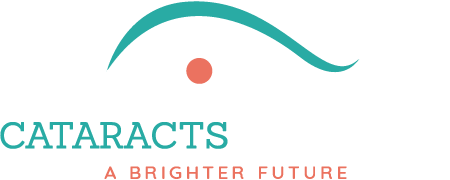Cataract Treatments
Cataract is the clouding of the lens within the eye that results in blockage of light, thereby impairing the vision. The lens in an elliptical structure located just behind the pupil. This transparent lens works like camera lens- focussing light images onto the retina, which further sends images to the brain. In younger age, the lens is elastic and can capture both distant and nearby images. As the age advances, lens become harder and less flexible due to various biochemical changes in the eye, which results in clumping of alpha proteins, forming opaque or cloudy structures called cataract. Due to loss of transparency of the lens, images formed are not clear.
Cataract is a slow and progressing eye disorder affecting mainly people above the age of 65. Canine cataract is one of the commonest problems affecting the eyes of the dogs. Most of the eye cataracts in humans do not cause any problem other than affecting the vision. It is characterized by slow and painless decrease in vision, blurry vision, glare especially at night, decrease in color intensity, yellowing of images and frequent change in prescription glasses. Different cataract treatments are recommended depending upon the stage of the cataract.
Medications and Other Measures
If the cataract is in early stage of development, your ophthalmologist may prescribe you some visual aids or drugs to slow down the progress of the cataract.
Even surgery is not a permanent remedy for cataract because they can return, early cataracts can be managed with the following measures:
1. Using stronger eye glasses or contact glasses
2. Use of magnifying glass during reading
3. Strong lighting
4. Medications or eye drops- In some conditions where the development of cataract is small and near the centre of the lens, medicated eye drops containing phenylephrine can be prescribed to the patients. This helps in dilation of pupils of the eye and improves the vision temporarily. Some of the commonly prescribed eye drops are Mydfrin, AK-Dilate and Neo-Synephrine. These eye drops can make your eyes more sensitive to sunlight; hence it is advisable to use sunglasses whenever you are in sun. Aldose reductase inhibitors are prescribed in diabetic people to prevent or delay eye cataracts.
NAC drops supplied by www.cataracts-dissolved.com have been used now for many years, have undergone trials by TV and the press and has proved successful in a very high proportion of cases for both people and pets, without the need for invasive surgery.
Cataract Surgery
Surgery is an effective solution for getting rid of the cataract. In a cataract surgery, the cloudy natural lens is removed from the eye and is replaced by a permanent intraocular lens implant to restore the normal vision. When should you go for a cataract surgery is a subjective decision. You may be able to read, work on computer, watch television or even drive properly for a few years even after being diagnosed for cataract. However, eventually you vision will get blurry, you may start to see 'ghost' images and the colors may look faded. This can't be corrected with glasses. When it becomes difficult to carry on the daily routine tasks properly due to cataract, it may be about time when you should get the surgery done. However, cataract doesn't affect your ability to have normal vision even if you go for surgery a bit late. So, you can take a carefully thought out decision and consult your doctor for right advice on the timing.
Cataract surgery is relatively less complicated and can be performed on an outpatient basis and the patient could be relieved the same day as well. There are mainly 3 surgical techniques for removing eye cataracts:
1. Phacoemulsification:
This is the commonest type of cataract surgery that is performed these days which involves a process known as phacoemulsification. This surgery is done under operating microscope and can be performed in under 30 mins. The procedure requires minimum sedation. The surgeon makes a minor incision near the cornea and inserts an ultrasound probe in the eye. The ultrasonic vibrations from this ultrasound probe are used to dissolve the lens and its fragmented pieces are sucked out with the help of same probe. After the removal of cataract, an artificial lens is replaced in the thin capsular bag from where cataract was removed. The procedure doesn't require any stitches post surgery.
2. Extracapsular Surgery:
This technique is employed only when the cataract is in very advance stage and the lens is far too dense to be dissolved into fragments by ultrasound. In this procedure, the incision made is larger so that the whole cloudy lens is removed in a single piece. After the removal of cataract, an intraocular lens implant is replaced in the capsular bag. However, this procedure requires a number of sutures to close the wound and it generally takes a some time for recovery of vision.
3. Intracapsular surgery:
This technique is not very common and has a high rate of complication. It requires even larger incision that the other type of cataract surgery & the whole lens along with the surrounding capsule is removed. In this case, the intraocular lens is placed in front of iris.
Remember if any type of surgery is a worry for you then alternative cataract treatments are being supplied by: www.cataracts-dissolved.com and has shown a very high success rate for many years.
In very mild cases of Cataracts, diet, nutrients, herbs and other alternative therapies can help, for example:
Nutritional therapy for cataract
Studies have shown that vitamin C can help in preventing as well as treating cataracts. This important anti-oxidant is effective in treating cataracts because the lens of the eye contain more vitamin C than anywhere in the body. Other antioxidants such as quercetin and rutin have synergistic action with vitamin C. Studies have found that Alpha-lipoic acid (anti-oxidant) can prevent or stop cataract. Vitamin B deficiency is one of the prime causes of photosensitivity, which makes the eyes more sensitive to UV damage and this results in cataract. Daily intake of riboflavin and vitamin B complex reduces this photosensitivity.
2. Dietary measures for cataracts:
Some foods can affect the healthy blood flow in the eyes and can contribute to the formation of cataract. These foods include dairy products and refined sugars and carbs. Excessive intake of these foods can destroy vitamin C in the lens.
3. Herbs:
Some of the herbs which work as effective anti-oxidant and maintain healthy blood flow in the eye are Billberry extract, eye wash with triphala tea and drinking gree tea. These help in promoting cell rejuvenation and improving eye sight.
4. Lifestyle changes:
Certain healthy tips like avoiding cigarette smoking, using 100 percent UV protection sunglasses and avoiding overuse of microwaves (as radiation leakage from microwave can cause eye cataracts).

